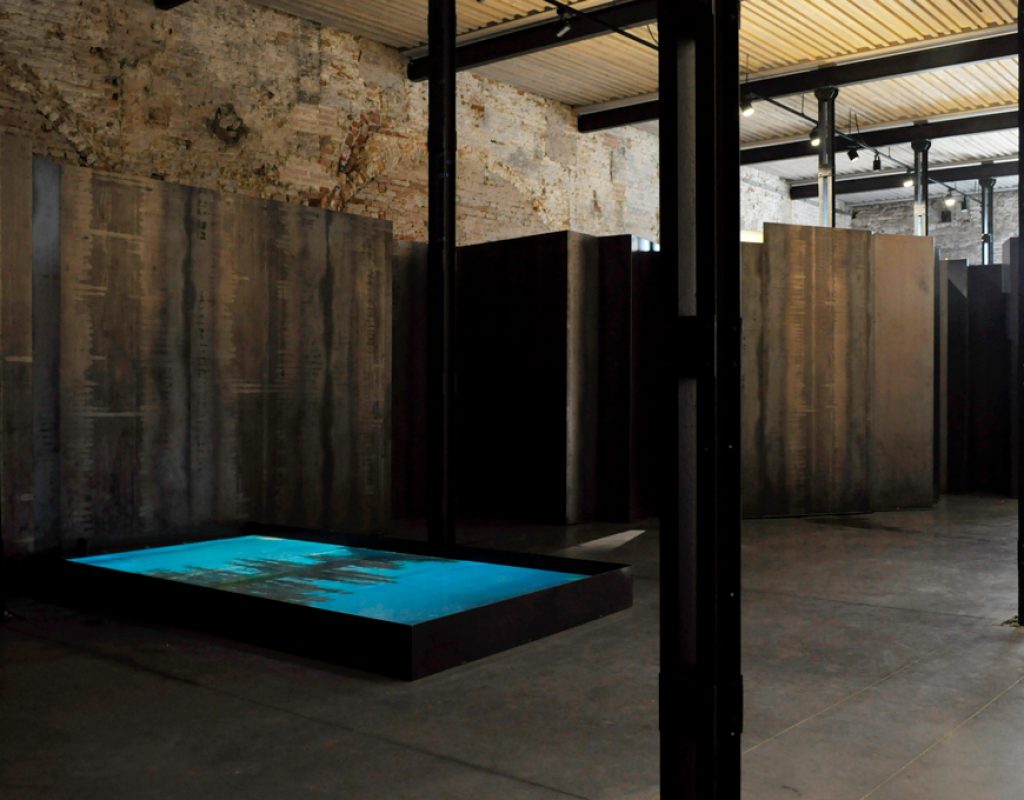
Possessing Nature
In collaboration with
Curator
Label
DETALLES DEL PROYECTO
Possessing Nature is a site where the spectator is summoned to travel throughout the his- torical drifts of modernity; those drifts of which their beginning, if there was ever any, should be located at a point where nature appears as an object that can be taken over by humanity, and where the technique becomes a means and a manner of production, from where labor and life are alienated.
Conceived in the blur between sculpture, installation, sound art and visual art, and also conceived at the limits between urbanism, architecture and engineering; ‘Possessing Nature’ should be thought of as a constructive system, an aesthetic apparatus and a histori- cal political device that brings relations between technology, modernity, capitalism and globalization into the present.
With this piece conceived as a constructive system, Tania Candiani and Luis Felipe Ortega, convert the technical calculations used in hydraulic engineering into a creative power, to the point of making all the elements that conform it (water, channels, cisterns, steel, piping, pressure pumps, electrical installa- tions, programming digital systems and pro- jections of images), work as the same time as poetics and as historic indexical signs of the development of technology. With this vision of the piece, the constructive system of ‘Possessing Nature’ should be understood as a character; as a sort of temper, in this case of the matter, with which its location in the armory hall determines a condition of aesthetic experience, where the tension between history and nature occurs in the body of the spectator as an immeasurable experience.
Unlike a tool or a machine, an aesthetic apparatus is not explained by its use or by the rela- tionship it bears with the forms of development and progress. What determines the aesthetics here is its function, it’s concretion and its ener- vation, this is, the relationship that a technology as poesis keeps with the vital, existential and historic characters of the environment from which it emerges.
In this context, we must see ‘Possessing Nature’ as a construction, a sculpture and an engraving; we must read it as a map, a trace and a script; we must listen to it as an acoustic percussion box and a musical organ of pleats, where the sluices are another way to manage the force and pressure produced, not from the wind but rather from water. At the point where the spatial volume becomes noise, and the latter becomes physical oppression; there, -similar to the paradox of Alice- the scale can be larger and smaller at the same time; the sound can be nature’s lament or the modernity’s stridence, and the graphics meaning or an enigma. The aesthetics of ‘Possessing Nature’ conceived as a paradoxical system of signs and forces in tension is supported on the elementary pathos of hydraulic engineering. In other words, the human need of containing that which always seems to slip out: water.
‘Possessing Nature’ is in itself a historical-political criticism to globalized modernity’s forms, particularly to its postcolonial evolution. Conformed by multiple traces of plastic and spectral elements, ‘Possessing Nature’ displays its historical indexical signs in two levels, as a display of affection images and as a dis- play of spectral images.
As an affection image, it would also have to be perceived as a water accumulation system, as well as drainage. Its constructive system, its scales, its materials, all are historical traces of the hydraulic engineering forms used in the 20th Century. ‘Possessing Nature’ materializes modernity’s paradox in its affective poten- tia, or as Benjamin would say: “…There is no document of civilization which is not at the same time a document of barbarism.”
This paradox leads us toward the reading of ‘Possessing Nature’ in its spectral images. At the point where the water becomes evident, in the little cistern that contains it, the phantoms of modernity make themselves present. This reservoir-cistern works as a screen, or even better, as a place for a glimmer of the spectrum of two cities where modernity has failed: Venice and Mexico. In this mirror/screen images of the Venetian canals suspended in history and worn a way images of the drainage system in Mexico City come and go. At the vertex where two dreams of water meet, the paradox called ‘Possessing Nature’ arises.
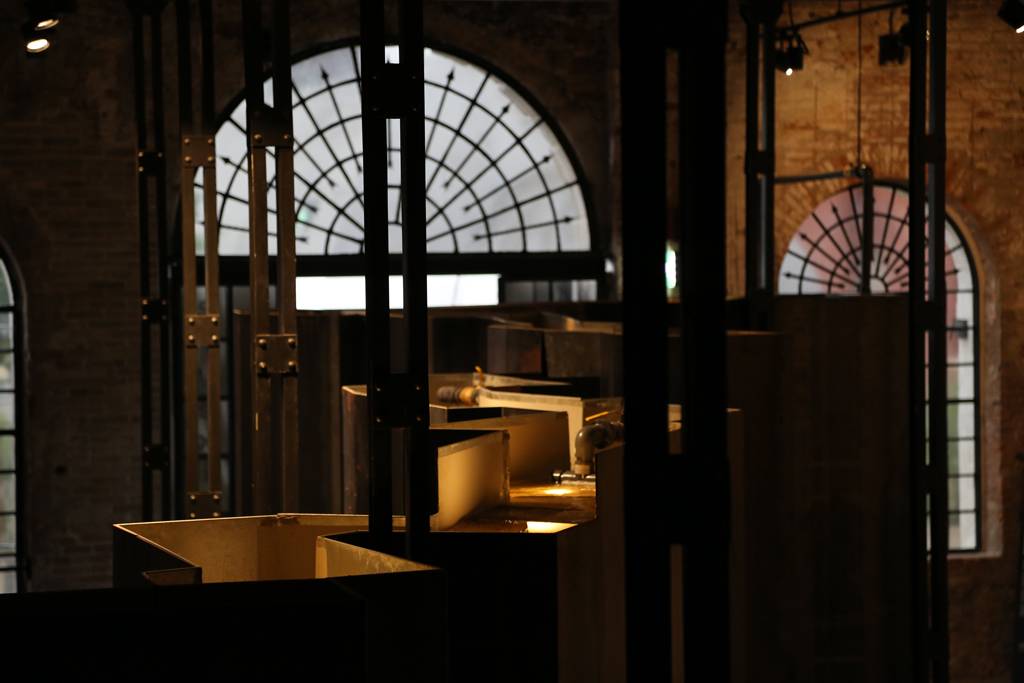
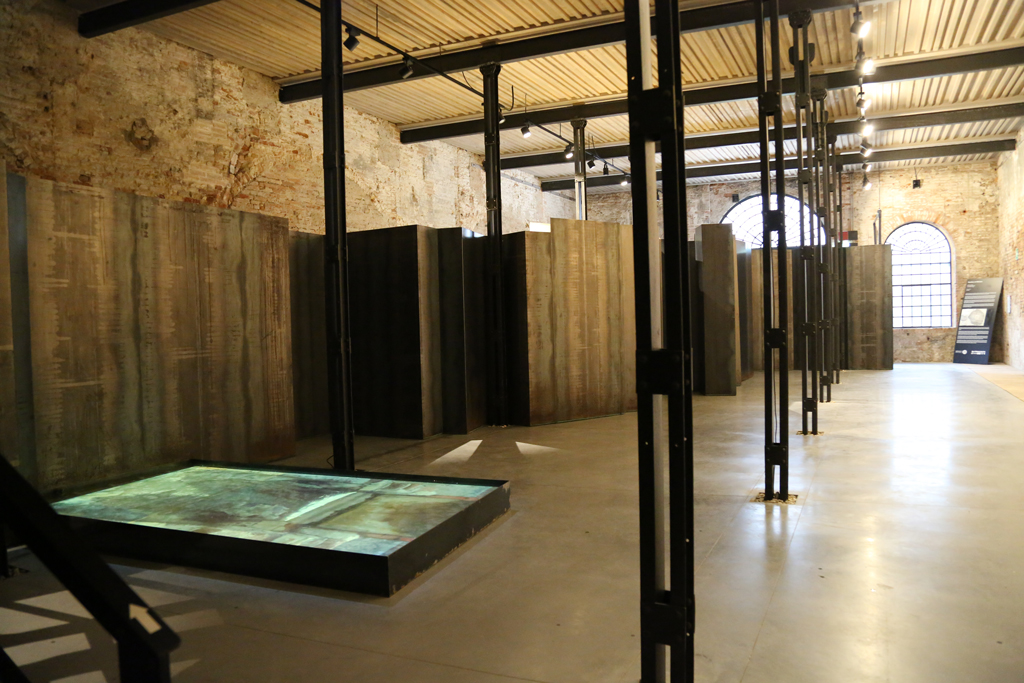
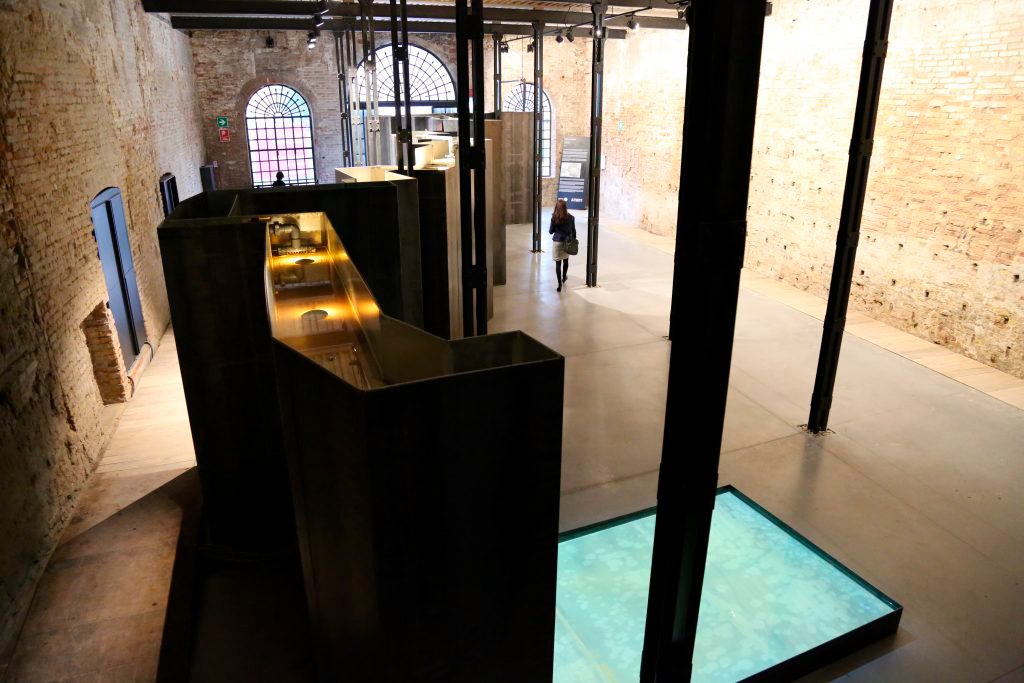
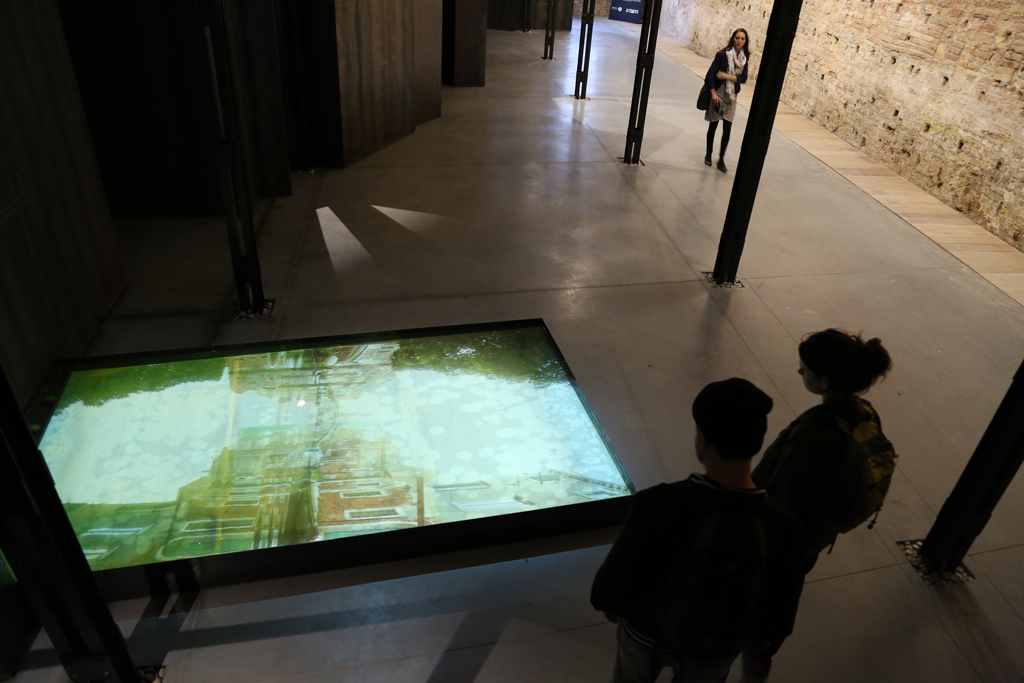
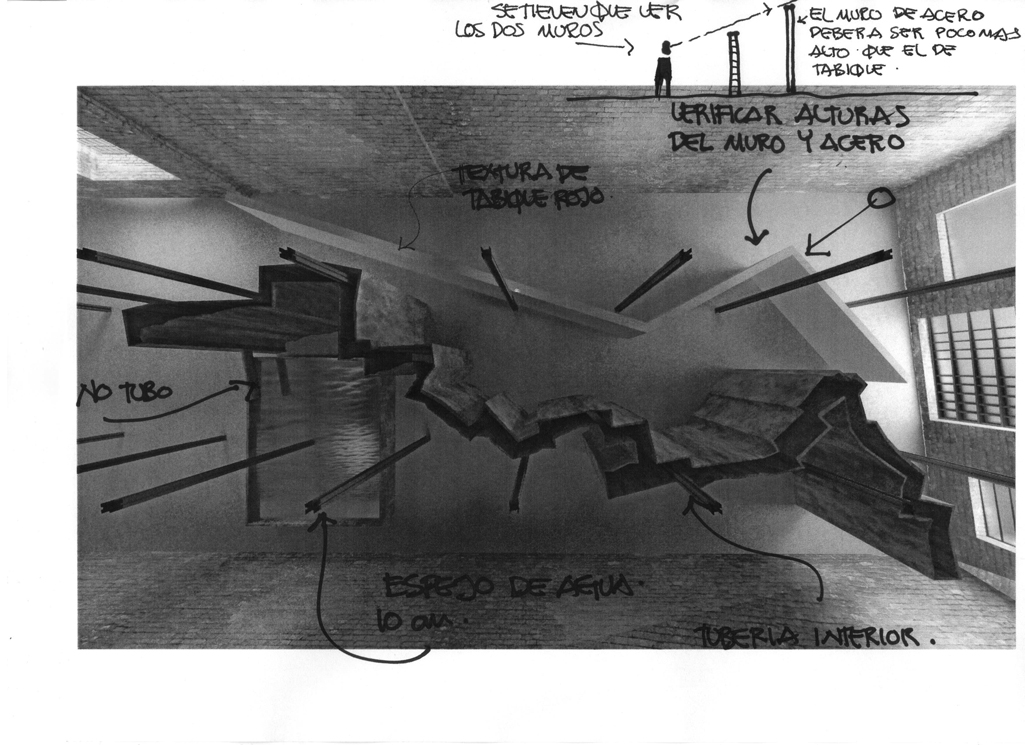
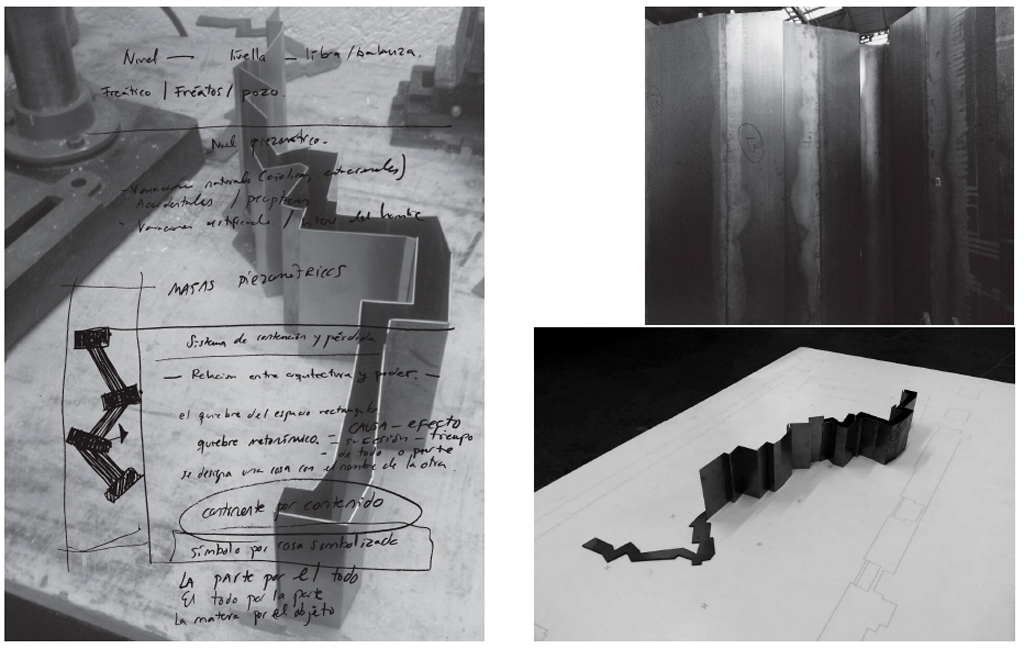
DETALLES DEL PROYECTO
DETALLES DEL PROYECTO
DETALLES DEL PROYECTO
DETALLES DEL PROYECTO
DETALLES DEL PROYECTO
DETALLES DEL PROYECTO